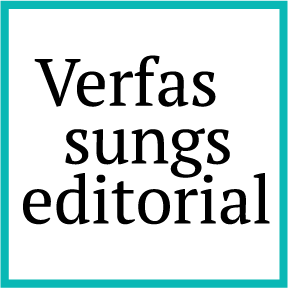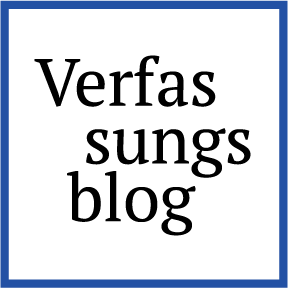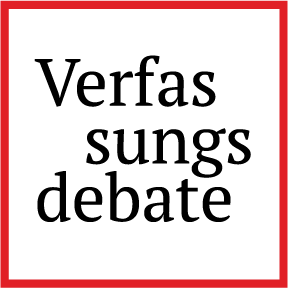Narrowing the Estonian Electorate
Excluding Russian Citizens from Local Elections Amid Security Concerns
On 26 March 2025, the Parliament of the Republic of Estonia (Riigikogu) amended the composition of the electorate for local government elections in accordance with the procedure prescribed by the Estonian Constitution. The right to vote in local elections is now restricted to citizens of the Republic of Estonia and of the European Union. Prior to this amendment, Section 156 of the Constitution had granted voting rights in local elections to all permanent residents of a municipality who met legal age and residency requirements, irrespective of nationality. This broad eligibility included individuals from various countries, provided they were at least 16 years of age. A significant portion of these voters were Russian-speaking residents, primarily citizens of the Russian Federation or Belarus, or stateless persons originating from these states. The decision to revise the electorate was driven by Estonia’s recent historical experiences, the Russian Federation’s war of aggression in Ukraine, and increasing influence operations in both Estonia and Europe more broadly. A brief contextual overview helps to elucidate the motivations behind this constitutional change.
Background of electoral amendment
The definition of the electorate in local government elections across Europe has always been highly variable. There exist no binding, uniform principles or practices, given the diversity of national histories and sociopolitical contexts. As such, states retain the discretion to regulate voter eligibility in line with their own democratic frameworks and priorities. Importantly, the Estonian Constitution does not treat the right to vote as a universal human right but rather as a political right derived from the Constitution, regulated at the level of statutory law.
Historical context shaping the electorate
Repressions, forced deportations, and mass emigration during World War II resulted in the loss of over ten percent of the Estonian population, disproportionately affecting the national elite and drastically altering the demographic composition within a short time span.
These demographic changes were accompanied by the imposition of communist ideology and Russian imperialist narratives in everyday life. Estonians found themselves on the verge of becoming a minority in their own country, sidelined in public life. In both the capital, Tallinn, and the northeastern region of Ida-Viru, ethnic Estonians became a demographic minority. The influx of Russian-speaking populations, the spread of the Russian language in administration and public services, and disregard for the preservation of Estonia’s living environment and national culture compounded the societal impact.
The abuses of this period have been meticulously documented in Estonia 1940–1945. Reports of the Estonian International Commission for the Investigation of Crimes Against Humanity (Tallinn, 2006). Victims of Soviet communism and Stalinist repression long awaited an apology or formal acknowledgment of wrongdoing – something akin to the moral gesture made by Willy Brandt during his visit to the Warsaw Ghetto. No such apology was ever forthcoming in Estonia, yet the collective memory of suffering and a latent sense of insecurity remained.
The collapse of the Soviet Union presented Estonia with the opportunity to restore its sovereignty, which was formally achieved on 20 August 1991. The democratically elected Supreme Council (Estonian Parliament) declared the legal continuity of the Republic of Estonia and established a Constitutional Assembly to draft a new Constitution. However, at the time of this reassertion of independence, Soviet military forces, their personnel, and numerous migrants remained in Estonia. Active military units withdrew only by September 1994, but many associated workers and administrators remained.
The drafters of the Constitution acknowledged this de facto situation and sought to integrate long-term residents – products of decades of migration – into Estonian society. As such, the constitutional provision extended voting rights in local elections to all permanent residents, without distinction of nationality or citizenship. The concept of “permanent residence” was interpreted generously. Although integration occurred – albeit more slowly than hoped – pressures persisted, especially in favour of continued Russian-language use in education and public life. In Tallinn and Ida-Viru County, including Narva, local administrations were dominated by Russian-speaking individuals.
In the early 1990s, it was hoped that Soviet-era migrants would adopt Estonian citizenship and integrate into society. However, the reality diverged from these expectations. Due in part to the Russian Federation’s overt hostility and covert resistance, only around 60% of Russian-speaking residents in Estonia had acquired Estonian citizenship by 2021.
What Western observers often overlook – and Russian propaganda wilfully ignores – is that citizenship entails a relationship of allegiance to the state. Under Russian law, this includes obligations such as military service and loyalty to the state. When coupled with the repeatedly stated assertion by President Putin that “Russia ends nowhere”, the implication is clear: the Russian state continues to see itself as an imperial power, justified in reasserting control over former Soviet territories.
The security imperative and constitutional change
Russia’s full-scale invasion of Ukraine in 2022 marked a watershed in Estonia’s national security posture. It necessitated a fundamental re-evaluation of citizenship and electoral rights from a security perspective. Given Estonia’s historical traumas and the documented modes of Russian influence operations, the need for constitutional safeguards became inescapable.
On 18 October 2022, the Riigikogu adopted – with a significant majority – a resolution declaring the Russian Federation a state sponsor of terrorism. This political stance made it morally and logically untenable to allow the citizens of such a state to continue participating in Estonia’s internal democratic processes.
Under the Estonian Constitution, local governments independently manage all matters concerning local life. Like many democratic nations, these municipalities play a crucial role in managing educational policy, strategic planning, and even participate in the electoral college for electing the President of the Republic. The continued involvement of citizens from an aggressor state in these processes had become ideologically inappropriate and a potential internal security risk.
Moreover, the participation of Russian and Belarusian citizens in Estonian politics came to symbolise a broader challenge: the compatibility of authoritarian regimes with the values of European rule-of-law democracies. Estonia deemed it necessary to draw a firm line.
Legal pathway and public debate
Prior to amending the Constitution, an extensive public debate was held. Arguments for and against the amendment were aired, and legal experts assessed the constitutional and security implications. The chosen legal route was to invoke the urgent amendment procedure under Section 163 of the Constitution. This required a four-fifths majority in Parliament – a nearly unanimous consensus. The requirement was met, with 93 of 101 members voting in favour, conferring the amendment with high legitimacy.
This legislative decision reflected the predominant expectation of the Estonian public and the political elite’s unequivocal stance: matters of Estonian public life are to be decided by Estonian and EU citizens residing in Estonia. The opportunity to obtain Estonian citizenship remains open to all who qualify. Citizenship may be acquired either by birth or through naturalisation under clear, consistent legal conditions known to all applicants.
The issue of stateless persons
A legacy of the post-1992 transition is the continued presence of stateless persons – estimated at around 60,000 individuals – many of them elderly and holders of the so-called “grey passport”. These individuals have opted not to assume any citizenship, often to maintain travel access to both Russia and the European Union. In recognition of this, their voting rights in local elections have been extended for one additional election cycle. Thereafter, they must regularise their citizenship status or forfeit the right to vote.




Dieser Artikel unterbietet tatsächlich das ohnehin schon unterirdische Niveau des Beitrags vor einigen Wochen zum Ausschluss des rumänischen Präsidentschaftskandidaten Georgescu (https://verfassungsblog.de/romanian-militant-democracy-in-action/): Dort wurde mal eben der Wahlausschluss eines aussichtsreichen Kandidaten allen Ernstes als “Militant Democracy in Action” und “Shielding Democracy” verkauft, unter Auslassung sämtlicher dieses Narrativ störender Themen wie der Kritik der Venedig-Kommission am rumänischen Verfassungsgericht sowie der starken Indizien für Manipulationen durch die rumänischen Regierungsparteien und Geheimdienst (vgl. bereits zuvor die Kritik im verfassungsblog: https://verfassungsblog.de/romanian-militant-democracy-and-the-time-machine/; sowie, insbes. auch zum Versagen der EU in diesem Fall: https://www.ipg-journal.de/regionen/europa/artikel/etwas-ist-faul-8159/).
Mit solchen “Kleinigkeiten” hält sich vorliegender Artikel aber gar nicht erst auf: hier wird ungerührt gleich ethnische Diskriminierung im Wahlrecht als völlig normaler und gerechtfertigter Vorgang präsentiert. Die vielen Auslassungen und Falschdarstellungen – Stichworte u.a.: Diskriminierung der russischsprachigen Bevölkerung seit 1990, Verweigerung staatsbürgerlicher Rechte usw. – können gar nicht alle aufgezählt werden – insbes. der Hinweis des Autors, die Betroffenen könnten ja einfach die estnische Staatsbürgerschaft beantragen, entlarvt sich dadurch als dreiste Lesertäuschung. Einiges zu sagen gäbe es es auch zum historischen “Exkurs”, der, leider ganz typisch für viele osteuropäische Gesellschaften post 1990, den Geist einer kleinkariert-wehleidigen Selbstviktimisierung atmet.
Aber das größte Problem des Artikels ist sein bloßes Verharren auf einer rein deskriptiven Ebene: was denn nun genau die “Arguments for and against the amendment” waren, erfährt man nicht. Eine Auseinandersetzung mit oder Erörterung der zentralen verfassungsrechtlichen Fragen findet nicht statt: Inwiefern können “Sicherheitsbedenken” eine derart massive Einschränkung bisher und seit Jahrzehnten genossener Grundrechte rechtfertigen? Ist eine derartige Diskriminierung z.B. mit der GrCh oder der EMRK vereinbar? Können Handlungen eines Staates rechtliche Statusänderungen von in Estland lebenden Bürgern dieses Staats rechtfertigen und insofern letzteren mittelbar zugerechnet werden? Diese Diskussion wäre verfassungsrechtlich jedenfalls weitaus relevanter als im Jahr 2025 den Stalinismus als Begründung hervorzukramen – und von einem “President of the Supreme Court of Estonia (1992–1998), and a judge at the European Court of Human Rights (1998–2010)” wohl auch zu erwarten gewesen. Aber offenbar müssen nochmals 35 Jahre vergehen, bis – hoffentlich – die allseitigen nationalistischen Mythen über die Zeit vor 1990 endlich aus den Köpfen verschwinden.
Und als Nachtrag: wenn Brüssel und auch Berlin den estnischen wie den rumänischen Fall schweigend übergehen, kann man sich dort in Zukunft die hochtrabend-großspurigen Reden über Demokratie und Rechtsstaat in Richtung der Orbans, Putins und Trumps dieser Welt getrost sparen.